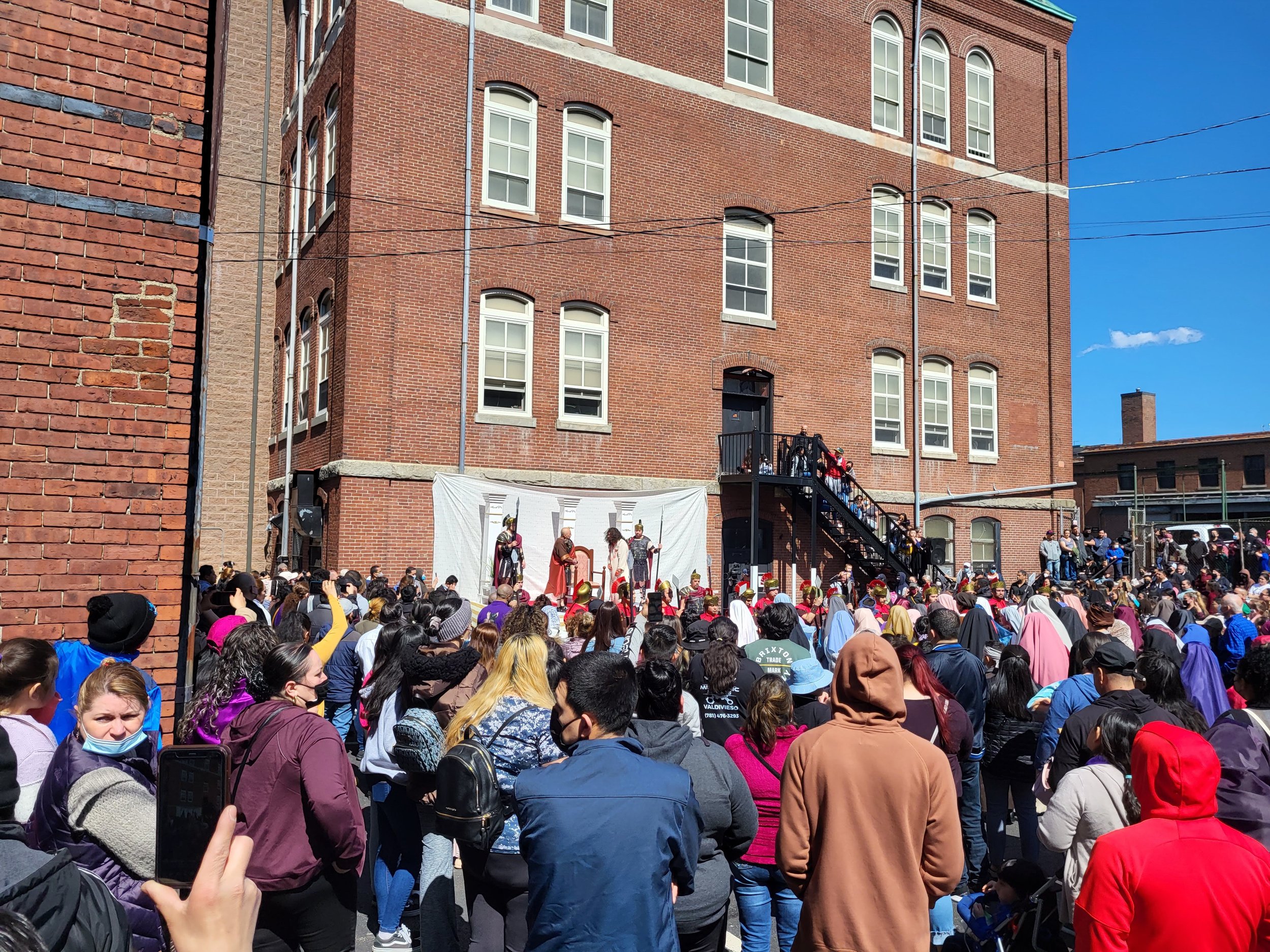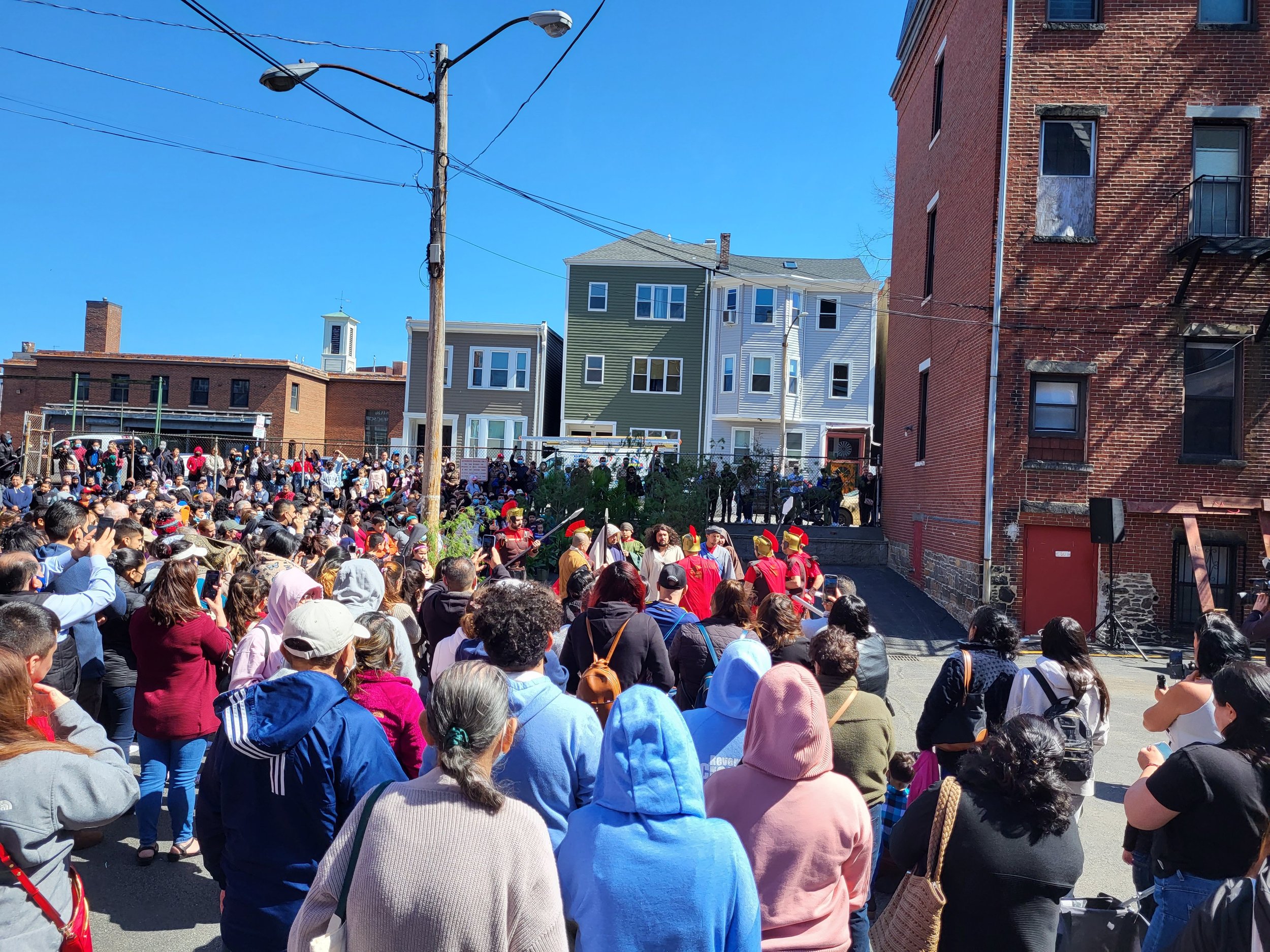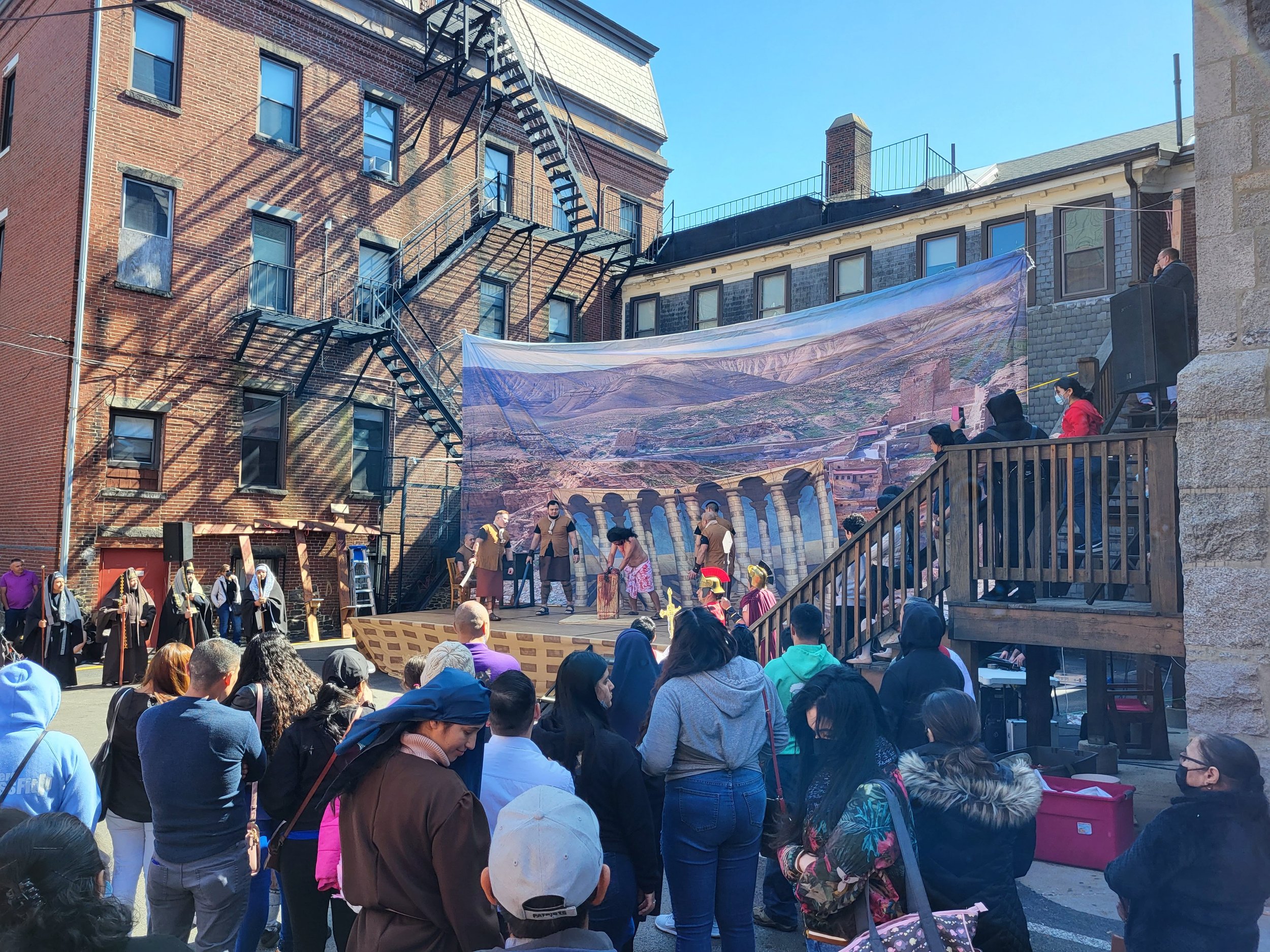Hello!
I’ve put together another brief update while spring blooms here in Boston - I hope you enjoy it.
Current Events in Ecuador
Omicron still is taming down in Ecuador, and there isn’t a new uptick like in the States. As I mentioned before, Ecuador has one of the highest vaccination rates in the world, and this might be helping their situation. Because of the drop in Covid rate over the course of the last two months, the US state department has lowered the travel advisory by two levels, from 4 “don’t travel” to 2 “Travel with increased caution”.
However, the travel advisory is still at 4 for the border areas with Colombia, and for Guayaquil - both because of their high rates of crime. As mentioned before, there still continues to be problems with gang crime in prisons and areas around narcotrafficking channels.
In Chontal, things are much the same. The new president in the community is the father in the family I have often stayed with. The family is one of those at the front of the church, so there may be more collaboration with the church. We’ll see.
More about Mission in Ecuador
Return to Ecuador
It was great news and a good feeling to have purchased tickets for a flight on July 19th to return to Ecuador. I’m very much looking forward to returning! I am going to stay anywhere from 6 to 9 months, but that’s not fixed yet. It will depend on how some things develop, including the visa.
I’m keeping open three paths to visas:
(1) I spoke with Monica, the visa agent at the Ecuadorian Bishop’s Conference, and, thankfully, I’m eligible to obtain another 2-year temporary religious visa. This is great news, and I only have to bring with me documents that I already know how to obtain here (apostilled FBI criminal background and CORI records). After arriving in Ecuador, I’ll have to go and talk to the bishop in Ibarra and get a letter of approval from him, so we’ll see. I’m starting communication with the local priest about that.
Incredibly, I’ve gone to Ecuador from the States 14 times since 2010, and I’ve had the temporary religious visa 3 times since 2013. Back in Feb of 2017, a new law stated that you could only renew that visa (and any other temporary visa) just once, and then you had to convert it to a permanent resident visa or, basically, go back to being a tourist without ever being able to get that visa again! Under that law, the visa also had the travel restriction whereby you couldn’t leave Ecuador for more than 180 days. I hadn’t known about this new restriction, and so I was out of the country in 2019 while in Peru and Boston for a long stretch. After the pandemic in 2020, I also returned to Boston, and so I lost that temporary visa without being aware of it. When I had spoken to Monica at the end of 2020, I found out that I had lost it, and so I had to wait for that visa to expire in Jan 2021 (to avoid a heavy fine at the airport), and arrived a bit later in Ecuador on a 90-day tourist visa. The religious visa looked like a problem going forward.
But I recently found out that in Feb 2021, the law was essentially changed back: you can now again get unlimited 2-year temporary visas (throughout the range of types, from religious to professional to others), and with no travel restrictions!
Although I couldn’t be employed in Ecuador with this religious visa, I think it’s really the best option for me right now.
(2) If for some reason things don’t work out with the bishop, or if it were to become clear that I would definitely only be in Ecuador for less than 6 months of every year doing volunteer activities, then the tourist visa is always an option. By default it lasts 90 days out of the year for free, and it can be renewed for about $200 for another 90 days, for a total of 180 days within the year starting at your arrival in the country.
(3) Finally, the professional temporary visa is another option. It’s similar to the religious visa, except there are a few other requirements. I need to have a college degree validated in Ecuador, and I may need to show a certain minimal level of finances (a low level). With this visa, I could do any type of work or business activities at all in Ecuador. The difficulty with this visa, though, is its cost relative to the religious visa. It will be at least several hundred dollars more expensive, and much more complicated in time and stress. The reason is that Monica is effectively an agent acting on behalf of the Catholic Church who handles all the behind the scenes tasks for the religious visa. She is plugged into the network and knows all the ropes. For individuals seeking other visas like the professional visa, it’s highly recommended to get an agent, costing up to $1000. In the tradeoff, individuals can get the visa without an agent, but it is typically time-consuming, stressful, and costly in a myriad of tangential ways. I’ve scoured a lot of knowledge off of websites from folks who have, and they recommend getting an agent, especially because laws can indeed change quickly. Even with my own experience in Ecuador under my belt, if I were to go this route, I would try to ask a lawyer friend for some guidance... All of that being said, I am bringing my apostilled diplomas and transcripts from both college and grad school to Ecuador to see if I can register my degrees there even if I don’t get the visa. I’m not sure that I can, but if so, that whole effort is not that costly or time-consuming, either in the US or there in Ecuador, so it’s worth the try. It might come in handy even in volunteer roles interfacing with institutions.
I also spoke to my landlord where I am staying, and he is amendable to me leaving for a long stretch and paying basically a storage fee in the house to leave my belongings. This also is great news, and so I’ll have storage while I’m gone and a place to come stay in again when I return. Thanks be to God.
Focus and Vision
As I’ve been mentioning, the primary focus will be on picking up where I left off in Mindo and Chontal, and continue to build and clarify the bridge in grace. I hope to stay for a much more extended time than recent visits. There’s also the possibility to visit the Amazon, and hopefully to spend time in a visit to the community of Alao in Riobamba - more in the mid-southern part of Ecuador. I would also like to visit Pd. Julian, who was the priest in Chontal who was responsible for pursuing the church-building through the Franciscan program in Ecuador.
Happenings in Chontal
I've still been in contact now and then with both María Herrera and Ximena Mina, who we've supported in fundraisers in 2020 and 2021.
María still continues on a difficult road. Her chemotherapy has stopped, I think largely because it was having too strong side effects, particularly nerve pain in her leg. I haven’t seen her, but I think she is still frail. She says she’s not in pain outside of the nerve problem in her leg, and that I think is supposed to improve with the end of chemotherapy. She seems happy, and the tumor has been reduced significantly, but I’m not sure that she is out of any woods. My vague understanding is that her form of cancer progresses slowly, and that may be to her advantage. I will visit and find out more when I go to Ecuador.
Ximena’s situation seems to be going well. I think that she is again renting part of her house to a schoolteacher, so earning extra income that way. It’s a hopeful situation that she can keep her home going forward. Her two kids are starting the schoolyear in the school in Chontal. Thanks again to the community there and the gifts we all made together.
Ximena’s son Esteban will be entering 1st bachillerato, which is the first of 3 years of high school / secondary school in Ecuador. In the US, he would be in 10th grade, or a sophomore. He’s also thinking of going to another school in the area, to focus on tourism. The area has 3 high schools to attend. The one in Chontal and the sister village of Magdalena is a small continuation on the middle/elementary schools in the villages. The public high school in Garcia Moreno, which is about an hour commute, is another option. It is larger and more centrally located, as Garcia Moreno is seat of the area’s local government. (In the past, Chontal and neighboring communities were was part of the same ecclesial parish as Garcia Moreno. It remains that way civically, while the church has broken the areas around Chontal off into its own parish.) The third option is a high school in Gualea Cruz, which is about an hour going in a different direction, on the road to Quito. It’s also located in Quito’s Province (Pichincha), as opposed to Imbabura where Chontal is, so there are different resources and connections available. It’s also principally known for its tourism program, and so English becomes a little more integral to their studies. This is where Esteban is considering going, as a number of kids from Chontal end up going to all three schools. So, we might have some more English to do!
Also in Chontal, there has been the sad arrival of cryptocurrency scams. Sadly, since cryptocurrency has only a virtual existence and requires a technical savvy to understand and be responsible for, it’s easy to fake value (whether cryptocurrency has any inherent value is debatable in itself), and most people don’t understand it. But the marketing effect rides novelty and fad, and media / social media attention. So, in these scams, the scammers ask for large sums of cash to invest in bitcoin. Once they get a few investors, they pay out them a high return in the first month - say 10%. This gets word around and the confidence of a larger number of investors, for a second, much larger cash infusion for the scammers. Then … they disappear with the money: 90% of the first investment, and all of the second.
Though they don’t have a whole ton of money for scammers, people in the poorer rural areas are easy pickings for these scams when the community is divided, as it is in Chontal. It is one more reason for the need of grace and encounter with Christ that can form communion: the real treasure and security that can protect authentic life and growth for individuals, families, and communities.
A great allegory for this is a video I liked to show to kids a while back in Ecuador, Smoke Seller. You can view it here, and let me know what you think in the comments!
The school year has just begun again in Chontal, which follows the academic year of the Coast, with what we would call “summer vacation” during the rain season in the winter. Kids are all returning to in-person classes for the first time since the pandemic. Masks are recommended in classroom, but not outside. I’m sure there will be a challenge to return to in-person classes, as there are in other areas. However, in places like Chontal, it is more natural to do things in person than in our urban cultures, for example. So it might have advantage in that. However, there is also the problem of the several young adults who had been able to live remotely while doing their university / community college studies. They now have to return to the cities, and that means higher costs, the stresses of city life, and distance from families. I know the young woman in the family I stay with was much happier taking classes remotely online than having to deal with the costs and daily rat race in Quito (which included physically running every morning to catch a transfer between trolleys.)
Living in Boston
This is longest I’ve stayed in Boston in ten years, as I’ve now been here for 13 months. I’m grateful for the friends and housing and employment I have here. As I mentioned last time, I remain dedicated to inviting all the wonderful people I’ve known in my life in Boston and the US into the Spirit of the mission in Christ, in Barriers to Bridges.
Latino Immigrants in Boston
There had been a few puffs of smoke of continuing some small gatherings of folks who used to attend St. Anthony Shrine, but they happen in fits and starts. The Spanish Mass there has been canceled, and folks are scattered about. Now that the weather is getting better, we’ll see if some more can be gathered.
Language with Ecuadorians
Each Friday, I’ve continued to do an online English class with a group of Ecuadorians in Lawrence, Mass. They all live together in the same small apartment: a father and mother, a son, two nieces and a nephew.
I had hoped to visit for a gathering at Carnaval before Ash Wednesday, but I was stranded in Pennsylvania by a winter storm. In early April, I was able to visit them and celebrated a few birthdays and spend time together.
I also visit Antonio and his wife Isidora who are from the indigenous community of Alao. If you remember, I had visited their community back in 2017. Antonio is one of the elders in the community, having arrived in the States maybe 15 or 20 years ago. He described the process whereby first mostly the men came, then afterwards the wives and women, leaving the children in the care of their grandparents. In the pandemic times, a last rush of youth came up, leaving the seniors alone in Alao.
Antonio described how quickly the youth get some type of work and begin to purchase things, like a cheap car for work. But was what most telling was his telling of his story, which he says is typical of people from his community (and probably many immigrants who come under the same conditions). His original plan was to come for about 2-3 years and earn enough money to build a house back in Alao, and then return. But he ended up staying longer and longer, and just stayed. This, he says, is what has happened to all the other men. They came intending to stay a few years to earn money to build a house back home, and then return. But they stay. And I could see the pain in his face from the second-guessing and wondering.
The original men opened up, in a sense, a canal that attracted others to come, including the women. I imagine the whole dynamic began to gradually change, such that there are over 500 people from the twin villages now living nearby. The compound of six-family homes where he lives is filled with people from Alao. By and large, only the seniors have been left behind to fend for themselves. And I can see the struggle in his face…
We talked about doing some language together, Kichwa and English. I hope to start that soon, before I go off to Ecuador.
Parish Accompaniment
I've still been stopping by East Boston to Most Holy Redeemer parish off and on. They are short social visits, as well as attending Mass. I’ve again begun visiting the youth group once in a while.
I spent the Triduum and Easter celebrations there in the parish. The Good Friday stations were a large production as usual. It lasts about 4 hours in total, and these pictures are from the beginning scenes. It is a good re-enactment that allows anyone to enter into the mystery to meditate on it.
Work at East Boston Harborside Community School
I’ll continue working at East Boston Harborside until the end of the school year. A lot goes on there, people are very dedicated, and there are a lot of services to the local community, especially immigrants. As I’ve mentioned a few times, it’s been a very good place to work, with great co-workers and supervisors, and wonderful students who I enjoy accompanying in their journey learning a new language and culture as they settle into a new country.
At the same time, as I've mentioned before, I struggle to fit in while trying to live my vision of things, which has overlap and some differences. I suppose that's why Barriers to Bridges has sprouted in the first place!
Online Workshops and Teaching Videos
The online workshops and teaching videos are still available - come on by and check them out by clicking on an image below.
I am still continuing to develop these workshops and teaching videos. As the foundation is accompaniment in life, there are a few that you might find beneficial in this pandemic, and if you are experiencing a life transition. I'm continuing to offer the Pandemic ReBirth Workshop, as well as the Tree of Life. Feel free to contact me directly if you're interested. And you can share the link freely as well.
I’m also aiming to put together another Food in the Desert video soon, and hope to be able to move forward in publishing the fourth book in the spiritual reflection series.
Health
I'm doing well health-wise, though still carrying some weight I put on over the winter. I have some osteoarthritis in my left hip that flares up sometimes, so I have to give that some preventative care and attention. I have a physical in June about month before leaving.
All of my immunizations are caught up and ready for travel. When I’ve gone to the hospital travel clinic here, I’ve often been given scripts for Malarone (in case I enter any areas at risk of malaria for a brief time) and Zithromax (as a silver bullet in case of severe traveler’s sickness). I’ll see if I can get these again.
Financials
I recently spoke with a generous tax accountant acquaintance who donated their time to give me some advice that was helpful for accounting and overall business purposes. There wasn’t anything major, just making sure everything is on-board, as Barriers to Bridges continues to be in a gray area of formation.
Here are the current financials for Barriers to Bridges (I’m still working on updating the balance sheet).
Reflection & Vision
I mentioned in my last update that my mother’s cousin Sonny, had died in February. The whole family came back to Boston for a funeral Mass at the end of April, and it was a special time for everyone who was close to Sonny to come together and experience her death, remember her life, and go forward into a new phase of relationship with Sonny and each other.
We all ate at the very same restaurant where Sonny and I really connected 13 years earlier. After many years apart, she had come to the end of my mother’s life in 2008, and six months later we were in that restaurant after the death of her husband Anthony. As I began the connection to Ecuador after my mother’s death, she began a new type of life in the North End of Boston after her husband’s death. My many visits and our time and conversations together were for me like a connection to my mother, and I think it wasn’t so much a coincidence that her husband Anthony and I were both engineers.
People were asking me how I was actually related to Sonny. So afterwards, my brother sent me over a few of the old family photos that he has from my mother’s Topjian side from Armenia. Here is a picture of my great grandmother on my mother’s father’s side, Seide (Nazaretian) Topjian, with her children. On the top left, my grandfather Dick is standing next to Sonny’s father Dan. This was annotated by my mother, and my guess is with the help of her uncle Mike, seated on the bottom left in the picture.
This picture must have been taken in Turkey or Syria, as only four brothers emigrated to the US. It looks to be around 1910 to 1915 timeframe, just before the 1915 date that historians typically place as the beginning of the Armenian genocide.
Back when Sonny found out about the church I had funded to be built in Ecuador in my mother’s memory, she became excited. It’s in part because she had found out that Seide Nazaretian’s father, Nicolas, had been instrumental in building St. Mary’s cathedral in Aintab (Aintep), which is now called Gaziaintep in Turkey. Apparently, Nicolas (Nigogohos) was buried under the church after he died in 1899. At the beginning of the genocide in 1915, the church was converted into storage and then a prison in the 1920’s, and finally into Liberation Mosque in 1986. You can see a note about it here.
As I sat in that restaurant again for the first time in 13 years, I reflected again on how the new lives we had both been living not only included our deceased loved ones in a special companionship, but it was because of their very deaths that that new life was possible. In Christ, God really gives new life out of death, and relationships don’t end with death, but rather change - with the gift of faith. Very much against our natural instinct, death in all its horror and darkness and pain, can be a gateway to a life much greater than we can imagine.
Without Sonny, it’s a new step and phase for me, and returning to Ecuador renews the mystery Jesus’ self-giving love, his death and resurrection, in a very paplable way. I’m very much looking forward to it.
Because I know that out of death, God brings a life much greater than I can imagine.
“Amen, amen, I say to you, unless a grain of wheat falling into the ground dies, it remains just a grain of wheat; but if it dies, it produces much fruit.”
Closing
May you be have the faith you desire to take steps in self-giving and not be afraid of death; and the hope to wait for the fruit that God can grow.
Feel free to comment or reach out anytime, and I'll post again when it's time.
-Jerome







